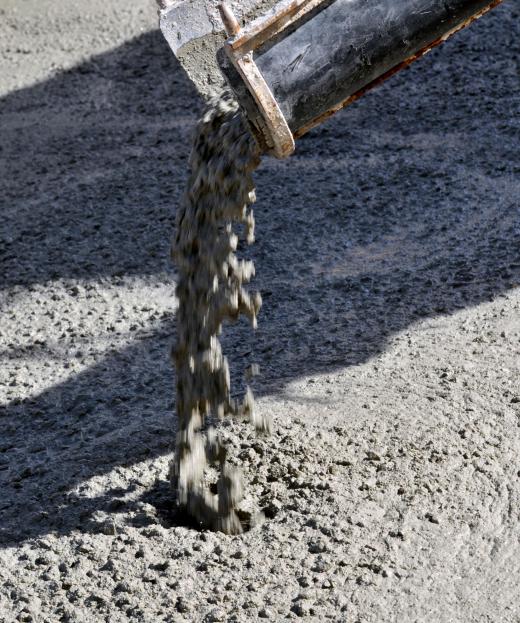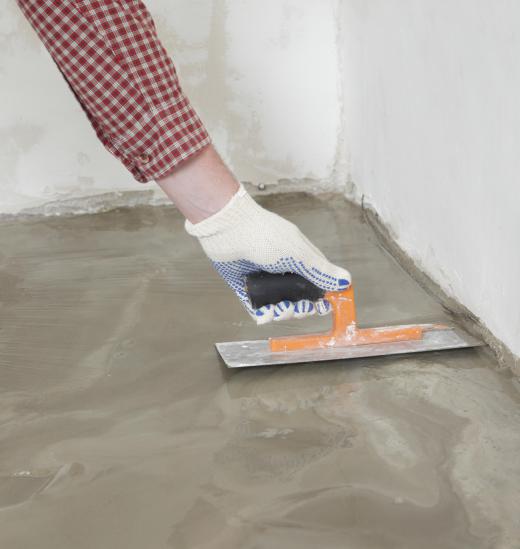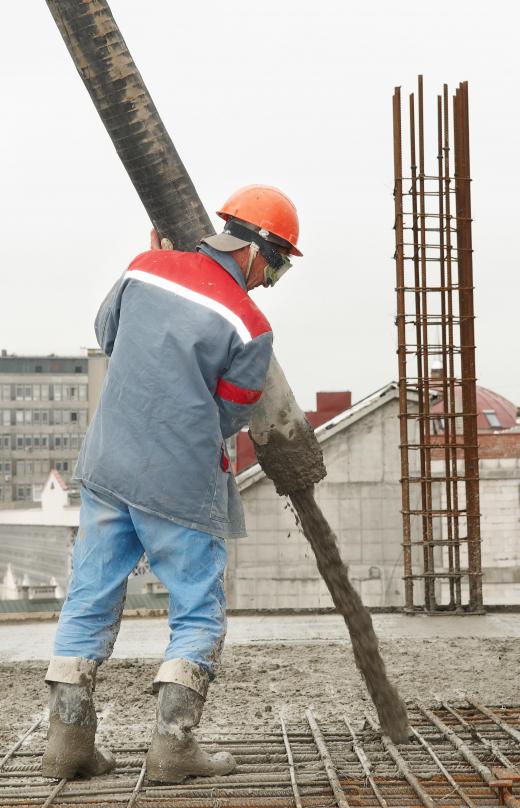Self leveling concrete is a polymer-based mixture used to smooth or even out a concrete surface. Unlike traditional concrete, self leveling concrete mixtures are very thin. This allows the mixture to flow easily once it has been applied to a surface, relying on the forces of gravity to distribute the mixture evenly. When used to overlay or top an existing floor surface, self leveling concrete may as thin as a sheet of paper or as much as several inches thick.
This product may be used both indoors and out, and essentially performs one of two basic functions. First, it can serve as underlayment for tiles or other floor coverings. In this type of application, self leveling concrete is poured over a wood or concrete subfloor to level it out before floor finishes are installed. This product can also be used as an overlay on existing concrete floors or patios. In this type of application, the mixture is used to conceal ugly, cracked, or damaged concrete finishes.

Before installing self leveling concrete products, users should clean the floor thoroughly and remove all loose concrete and debris. Next, any holes or cracks in the surface should be patched using a concrete epoxy or repair product. A dam must be built around the perimeter of the room or slab to control the flow of the liquid as it self levels. Some projects may also require the floor to be primed before the mixture is applied. Finally, the concrete can be mixed according to the manufacturer's instructions and poured onto the floor.

One of the primary advantages to this product is the speed and ease at which it can be applied. Even novice installers can effectively resurface or level concrete without expensive or complex tools and equipment. By using self leveling concrete to level out a surface, homeowners or contractors can extend the life of the finished floor above, and reduce the risks of squeaks or warping. This material is just as strong as regular concrete when installed correctly, and will last for many years with minimal maintenance. Finally, this product can be combined with dyes or stains to give out, worn-out concrete floors a new look.

There are a number of potential limitations associated with self-leveling concrete products. To reduce the risk of moisture-related issues, self leveling products should not be applied to interior-grade wood floors. Instead, they should only be used with exterior or moisture-resistant products. It's also critical to mix this product to the correct consistency prior to application to ensure it self levels as intended.
